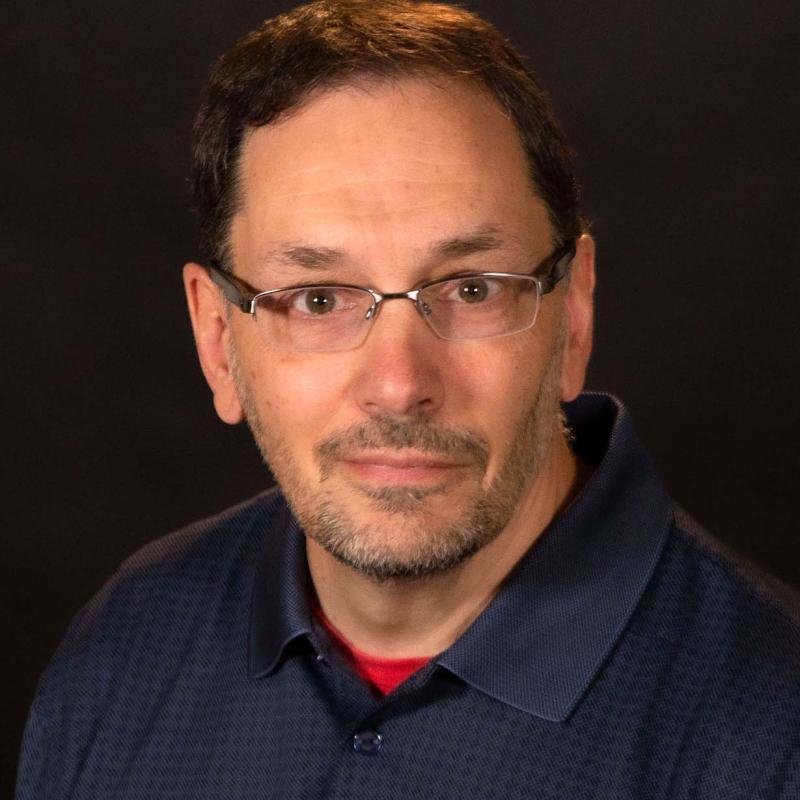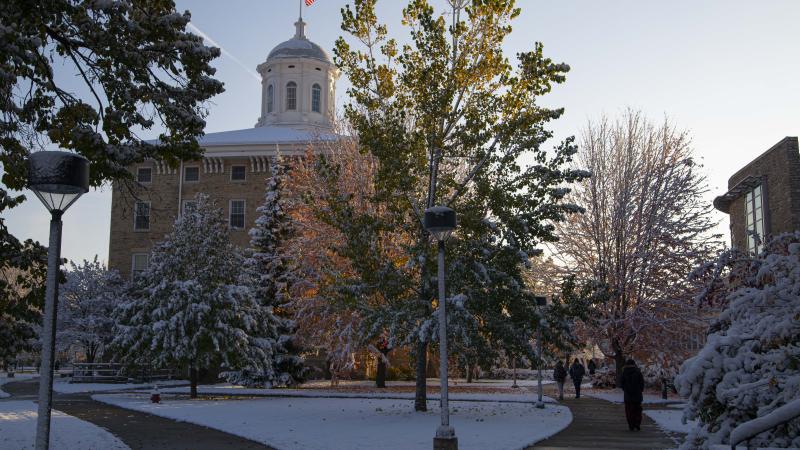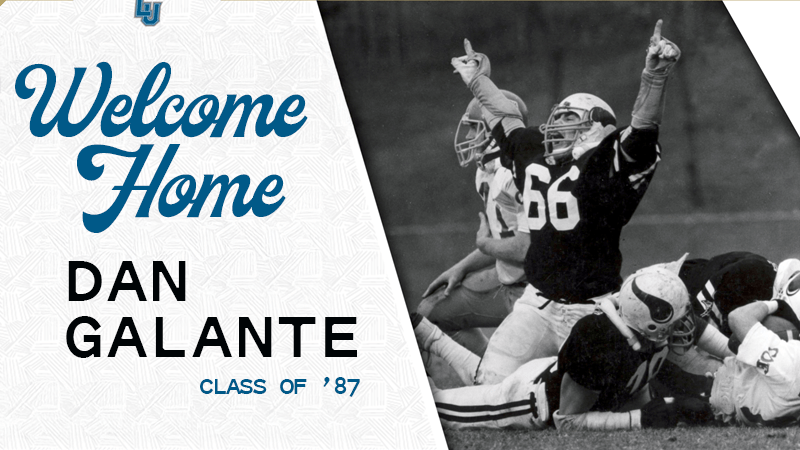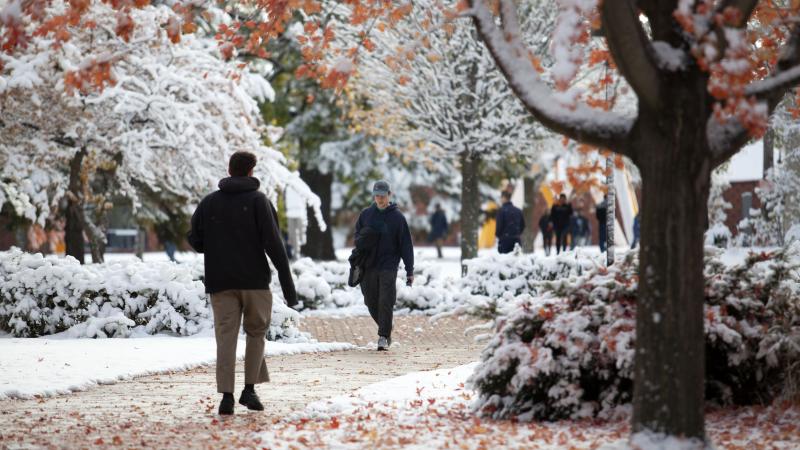Andrew Mast recalls the moment he came upon First-Year Studies (then Freshman Studies) while researching Lawrence prior to applying for a teaching position in 2004.
He was fascinated by this course that had all the university’s first-year students immersed in the reading and discussion of a selected set of works that spanned disciplines and mediums; sharing an academic experience that would lay the foundation for a liberal arts education no matter the field of study the student was pursuing.
“It blew me away,” Mast said. “I thought it sounded like the coolest class in the world, wished I had had something like it as an undergrad, and immediately ordered all the books that were being read that year.”
Mast got the job—he is the Kimberly-Clark Professor of Music and director of bands in Lawrence’s Conservatory of Music—and quickly embraced the idea of teaching First-Year Studies. He’ll be at it again this year, one of about 50 Lawrence faculty teaching First-Year Studies during Fall or Winter terms. They’re teaching works ranging from Natasha Trethewey’s Native Guard and Plato’s The Republic to Miles Davis’ Kind of Blue and the study of the periodic table of elements.
It's not just the students who are in learning mode. One of the joys of First-Year Studies, faculty will tell you, is that they are stretching themselves well beyond their comfort zones, learning alongside their students, sometimes from their students, as they facilitate discussions of an iconic jazz recording or take a deep dive into a play that explores the political and ethical conflicts of the AIDS epidemic.
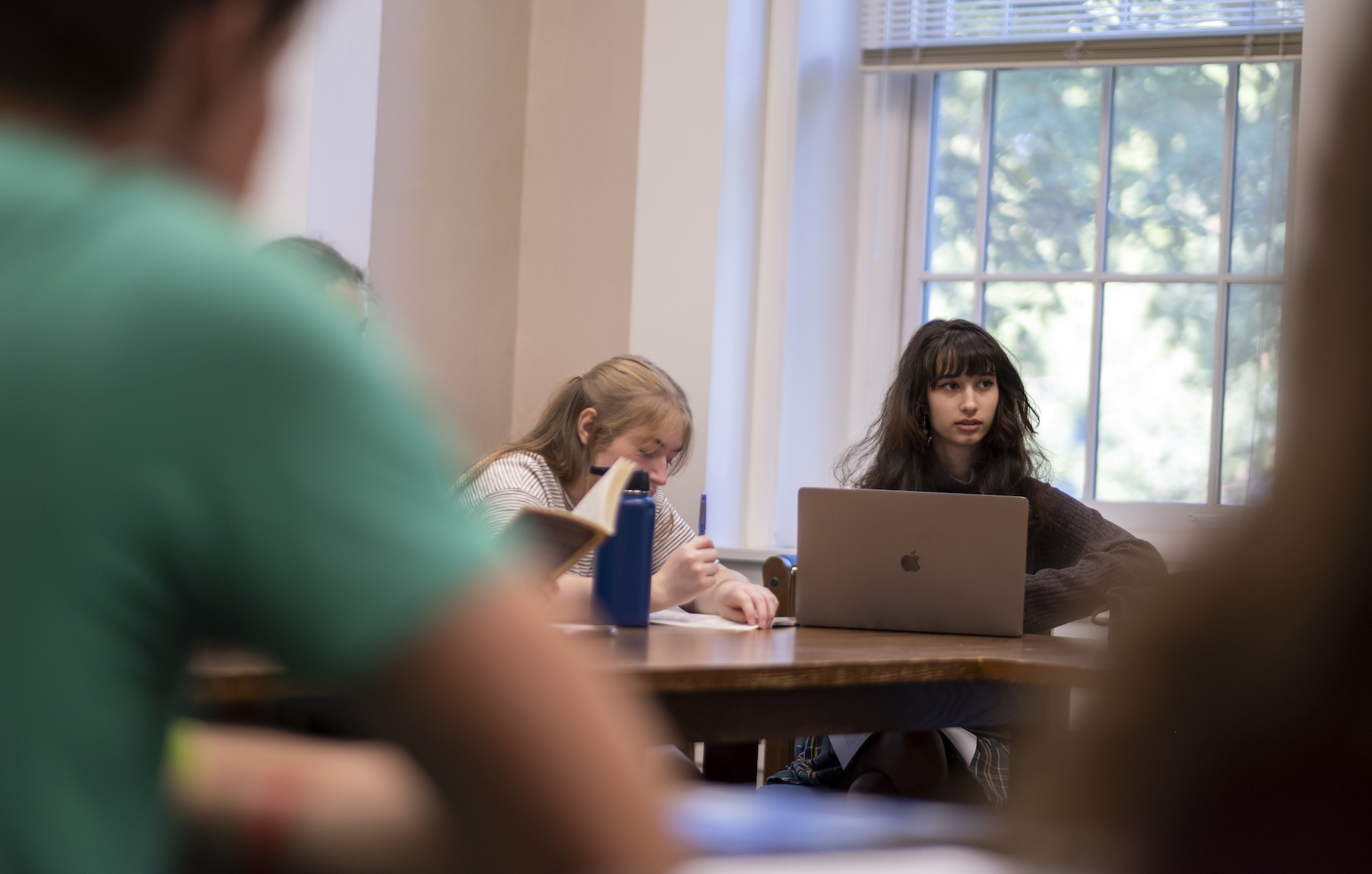
Ava Wadia, a first-year student, participates in a discussion with Professor Garth Bond during a First-Year Studies course in Main Hall. (Photo by Danny Damiani)
“I’ve always been interested in and intrigued by the widest array of disciplines, and First-Year Studies seemed to be a great way to fill in some of the holes of my own personal background,” Mast said.
Martyn Smith, director of First-Year Studies, takes us on a tour of this year’s syllabus
Celia Barnes, associate professor of English, calls teaching First-Year Studies “one of the most rewarding experiences” she’s had in her 12 years at Lawrence. She’ll be teaching the class again during Winter Term.
“I always learn so much teaching the class, in part because it exposes me to so many texts well afield of 18th-century literature—my area of expertise—but also because it’s a class that’s almost ‘flipped’ from the get-go,” she said. “That is, in order to learn together, my class and I have to teach one another. When we get to the periodic table, my chemistry enthusiasts get to shine; when we talk about Kind of Blue, my Conservatory students can talk a bit about what’s important to notice in the work. It’s a chance for students to teach and learn—and for faculty to do that as well.”
This dance with these diverse works has been part of the first-year experience at Lawrence since 1945, when then-President Nathan Pusey first introduced the concept. The original reading list included a film and had a laboratory component that required participation in music, art, or creative writing. It has been adjusted, tweaked, abolished, restored, and extensively revised in the years since, with the most extensive revision coming in 1997, with an emphasis placed on introducing the first-year students to the liberal arts while building skills in reading, writing, and speaking.
Throughout, it has been a differentiator for the Lawrence experience.
The syllabus changes frequently—this year saw “Jaya Semara,” a gamelan musical work, added to Fall Term, and Matthew Desmond’s Pulitzer Prize-winning book, Evicted: Poverty and Profit in the American City, added to Winter Term.
During your first two terms on campus, you’ll study works across disciplines and mediums in a unifying experience with every first-year student.
One constant through the years has been Plato’s The Republic, a connector for Lawrentians from today and generations past. A second constant is the faculty participation, teaching across disciplines in ways that take them into new territory.
“I do embrace the idea of teaching subjects beyond my own expertise,” said Kuo-ming Sung, Wendy and K.K. Tse Professor of East Asian Studies and professor of Chinese and linguistics. “That’s no problem and I always consider this a great opportunity to learn something new.”
Garth Bond, associate professor of English and a former director of the First-Year Studies program, is teaching again this term. He said he’s particularly taken with the challenge of teaching about Miles Davis’s Kind of Blue even though he has no formal music education. He’s learning, studying, listening right along with his students.
“It’s a great opportunity for Conservatory students to think about how they can bring their specialized knowledge of music into a general conversation; and for me to think about how I can facilitate those discussions,” Bond said. “That process of helping others to incorporate their expertise and specialized knowledge into a more general conversation productively is both a challenge and a joy.”
Fall Term has First-Year Studies students exploring Tretheway’s Native Guard; Plato’s The Republic; the Berenice Abbot photo, Tri-Boro Barber School, 264 Bowery, Manhattan; Amy Stanley’s Stranger in the Shogun’s City; and “Jaya Semara.” Winter Term brings Desmond’s Evicted; Tony Kushner’s Angels in America; the periodic table of elements; Jeremy Waldron’s The Harm in Hate Speech; and Davis’ Kind of Blue.
“When I teach Shakespeare or other Renaissance literature, I’m working with texts that I’ve spent decades reading closely and thinking about,” Bond said. “For better or worse, I’ve reached my own conclusions about the most important questions that those texts raise. But when I’m faced with a history of early modern Tokyo or—even moreso—the periodic table, I can safely say that I haven’t made my mind up about anything. In fact, I’m often still in the position of having to figure out what the questions are to begin with. It’s that early stage of learning and thinking, trying to figure out what the important questions posed by a work are and how an educated non-expert might try to answer them, that really energizes me.”
And that experience, shared by those nearly 50 faculty, creates a community all its own on campus.
“I think that students feel how our shared syllabus across all sections of First-Year Studies creates a shared experience for each class—and because of the links in that syllabus from year to year across the university as well,” Bond said. “It does that for faculty as well, and not only in terms of fostering a shared intellectual community with our students, but also in forging bonds with colleagues across departmental and even divisional lines. I have close friends in the physics and economics departments, in art history and the Conservatory, pretty much across campus. Even at other liberal arts colleges, that’s pretty uncommon—but here at Lawrence, it’s the norm. Part of the reason is that I have so many awesome colleagues, but I also think that the annual practice of coming together and figuring out how we are all going to teach these works from other people’s fields plays a huge role in encouraging friendships and fostering a shared sense of purpose and intellectual community.”

